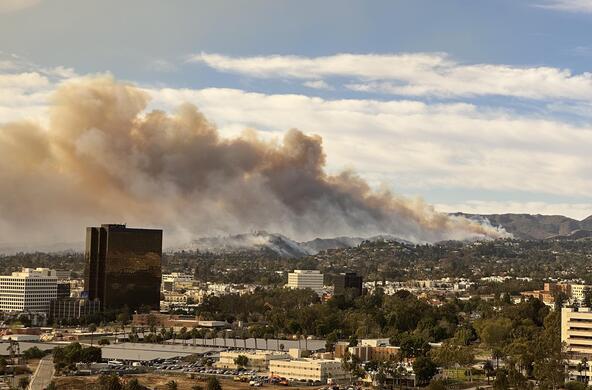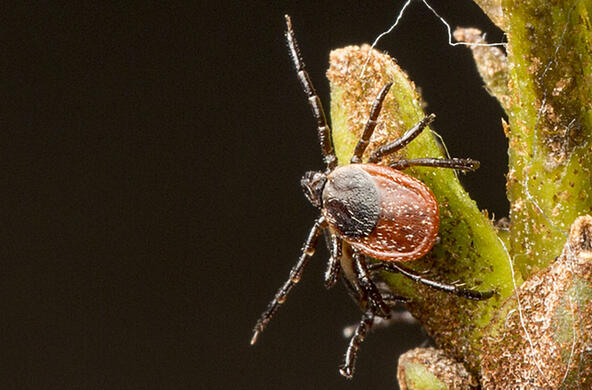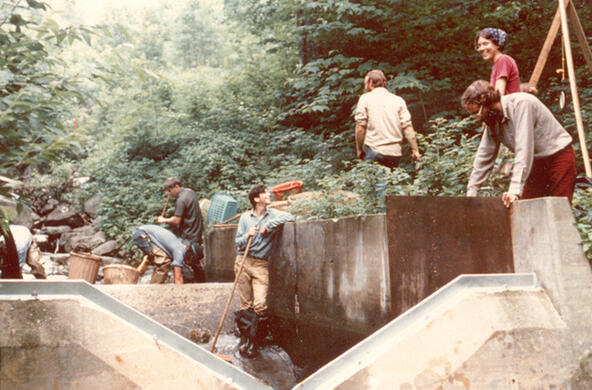Some accuse me of being a killjoy, raining on their parade. I prefer to think of it as simply relating the facts. So, today, let me talk about air pollution from fireworks.
Some of the earliest studies of air pollution from fireworks came from China. The Chinese discovered gunpowder, so it is not surprising that they might be the first to study its effects.
Two main classes of air pollution result from fireworks: excessive levels of ozone and fine particulate matter, which has become known as PM2.5, which signifies that it refers to particles less than 2.5 microns in diameter. These particles are important because when we breathe them, they can travel deep into our lungs and cause health effects. One recent study estimated that more than 3 million premature deaths occur worldwide each year as a result of ozone and particulate pollution from all sources.
The current EPA standard for ozone is 70 parts per billion (= 150 ug/m3)[a] and for PM2.5 is 35 ug/m3.[b] Ozone is not released directly from exploding fireworks, but it is produced in the atmosphere when the Sun’s ultraviolet radiation interacts with nitric oxides, which are produced from the explosive nitrogen compounds in fireworks. One study from Spain reported increases in ozone from 10 ug/m3 to 150 ug/m3 during the fireworks associated with the Mascletà holiday.
Using a database from 315 air monitoring stations across the U.S., another study reported that the concentration of particulate matter was typically 5 ug/m3 higher after 8 p.m. on July 4, compared to the days before and after Independence Day celebrations. At the recent NC Breathe Conference in Charlotte, Dr. Elizabeth Chan, a visiting fellow at the EPA in Research Triangle Park, reported significant increases of certain elements used to color fireworks displays—barium, copper, chlorine, magnesium, potassium, and strontium— in the PM2.5 fraction on July 4 and 5. Smaller increases were also found on July 4 for arsenic, antimony, and chromium, which have known human health effects.
As a source of ozone and PM2.5, fireworks pale in comparison to coal-fired power plants, automobile exhaust, and agricultural activities. Nevertheless, when you are watching fireworks on July 4, remember that you are receiving an increment of air pollution with potential health effects.
It’s another choice we make with environmental impact.
Dr. Elizabeth Chan, an ORISE fellow at the EPA, contributed some helpful comments on this posting.
References
Caballero, S., N. Galindo, R. Castaner, J. Gimenez, and J. Crespo. 2015. Real-time measurements of ozone and uv radiation during pyrotechnic displays. Aerosol and Air Quality Research 15: 2150-2157.
Chan, E.A.W., A. Benson, A. Dickerson, and B. Buckley. 2016. Concentrations of individual fine particulate matter components in the United States around the 4th of July. Presentation at the 2nd Annual NC Breathe Conference, April 8, Charlotte, NC.
Lelieveld, J., J.S. Evans, M. Fnais, D. Giannadaki, and A. Pozzer. 2015. The contribution of outdoor air pollution sources to premature mortality on a global scale. Nature 525: 367-371.
Saunders, R.O. and D.W. Waugh. 2015. Variability and potential sources of summer PM2.5 in the northeastern United States. Atmospheric Environment 117: 259-270.
Seidel, D.J. and A.B. Birnbaum. 2015. Effects of Independence Day fireworks on atmospheric concentrations of fine particulate matter in the United States. Atmospheric Environment 115: 192-198.
[a] 8-hour average of the fourth-highest daily maximum, averaged across three consecutive years
[b] 24-hour average of the 98th percentile, averaged over 3 years









